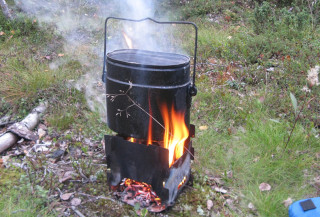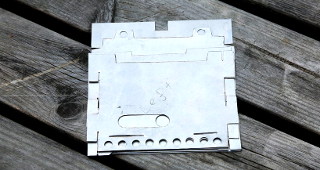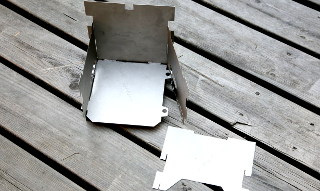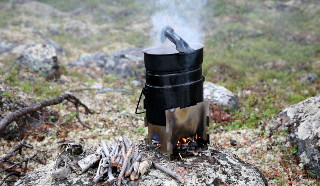
|
This thing has served me well for some 14 years (as of 2023). The sheet
metal has deformed back and forth quite a bit, but the pieces still attach
together as designed. I did, however, grow tired of having to blow on the fire
constantly, due to the too small space allocated for it.
Thus I have later modified the design
(not updated to the CAD drawings, sorry)
with two additional support plates, 3 cm × 14 cm
each, which go between the two raised sides. Look at these photos of the
support plates in place and
removed and you'll see where they go.
In the latter photo you'll also see the slots I cut to fit them in.
They raise the bottom of the pakki from its original recess
(as in the above photo)
to the level of the raised sides (as seen
here), giving 5 cm more
room for the fire. You can see this makes a world of difference!
Whereas this "turbo" arrangement
can consume a bit more firewood, it does also burn a lot better, requiring
less blowing and other maintenance. I now use this arrangement pretty
much exclusively, unless I'm using the Trangia spirit burner instead of
twigs. Despite being a bit higher than the original, the raised design
remains quite stable. The new design will also work with any
flat-bottomed pot, not just the "skinny" shaped pakki.
|



